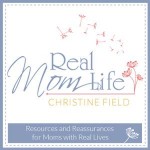HELP! My Child Doesn’t Pay Attention
A Mom wrote and asked for ideas on how to get and keep her child’s attention. There are many things to TRY to help the inattentive child. Let’s start with some simple modifications to the study area.

Physical study area
One mom got her child a tri-fold science display board. Her daughter did her book work with this board around her so she wouldn’t be so distracted by the room and the other kids around her. This may work for a calmer child, but not for a bouncier one!
Some other physical accommodations can be made actually allowing the child to move while they study. For example:
- Get a large exercise ball and allow your child to sit on it while they are doing table work. For some kids, this gives just enough movement to allow them to concentrate. For other kids with spatial issues, it can be a disaster. It is worth a try.
- Invest in a small, indoor trampoline. A lot can be accomplished while the child is bouncing! You can practice math facts, quiz them on subjects and more. You don’t need a fancy trampoline – just the simple ones at Walmart which can be purchased for around $30.
Bouncy kids present special challenges because it seems they are constantly in motion. Rather than trying to suppress the motion, work with the motion.
- Take frequent breaks. Gradually build up the time between breaks so they learn to attend for longer periods.
- Allow them to move to a different location from time to time. He might sit at the table for a bit, and then go lie on the floor to read. (Or sit upside down on the couch!)
- When reading aloud to your child, give them something to fiddle with. Play Doh or squishy balls can actually improve the child’s ability to focus. You might think they are not listening, but this hand movement actually helps most kids to attend.
- Mix up your teaching and your assignments so there is variety. A truly bouncy kid will not do well with all workbooks. Vary the assignments and allow your child to respond to them in different ways. Rather than writing a paper, let them do a demonstration, build a model or write a news show which they perform for you.
Study materials and methods
Color code the child’s materials. For example, cover the math book in green and have a green notebook for her to work the problems.
Sometimes these children respond well to charts, where they can tick off assignments as they are completed. This allows them to see their progress as well as to gauge how much more work remains.
Finally, if handwriting is torture for them, teach them to use the computer EARLY for writing. Too often kids associate the computer with games. Impress upon them that it is a tool for learning, not just playing.
Helping them behave
These are adaptations and modifications to the physical and organizational environment. What about expectations of the child?
It is critical that parents have planned ahead of time for misbehavior. Your child is not going to always behave. Sit down and make a list of the situations that trigger the undesirable behavior.
If you thought about it for a bit, there are predictable times and places that are troublesome. Make a note of every time you say, “My child ALWAYS …..” or, “My child simply cannot ….”
For each situation, decide upon a consequence. For example, “My child ALWAYS knocks over his sister’s books to aggravate her. When that happens, I will …….” Without a plan, you will respond from your feelings (not always wise) and will respond differently all the time (not consistent).
Then fashion a consequence based on your parenting style. It might be a time-out or removal of a privilege.
- In time, things will improve. What is required of you?
- Be consistent in routines and discipline
- Make sure your child always knows what to expect
- Apply consequences fairly and regularly
It is a challenge to work with a child who has trouble paying attention. Try these ideas and keep trying others until you find what works best for you and the child.

If you need more help, you can take a look at Homeschooling the Challenging Child by Christine Field.


I’m a deeply flawed, Christian mom, author, speaker, attorney and listener with a rich variety of life experiences. I advocate and champion mothers and family life. I help weary, discouraged moms find solutions for unexpected family challenges so they can know peace, joy (and a little bit of fun!) in the divine calling of mothering. Maybe you can relate to my non-Pin-worthy life. If I can ever serve or encourage you, please find me on Facebook, Twitter or Pinterest.

